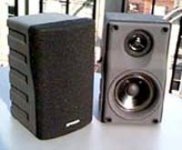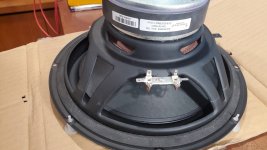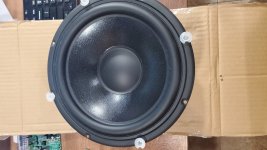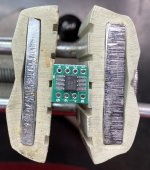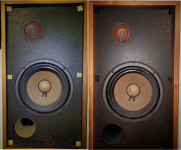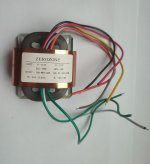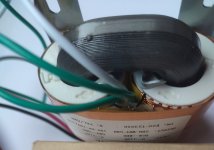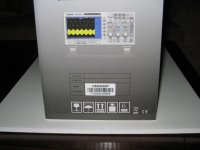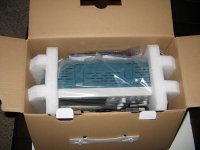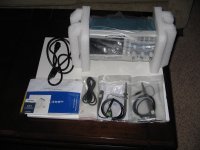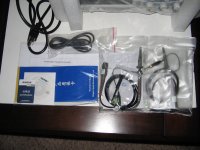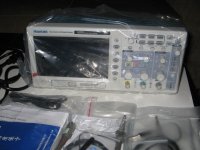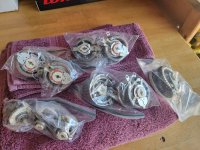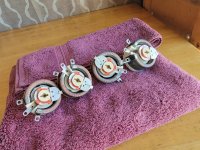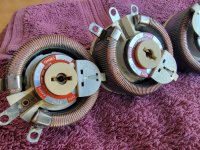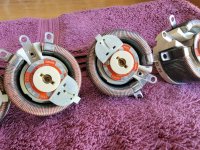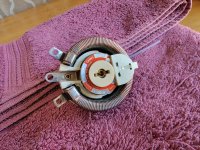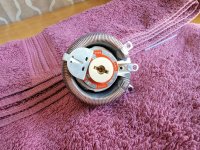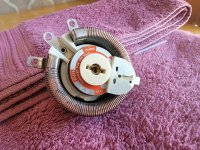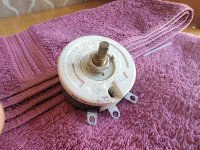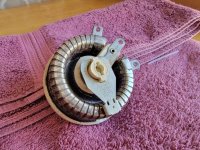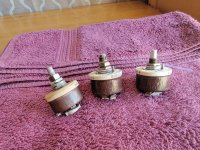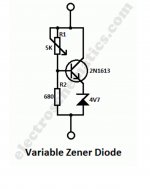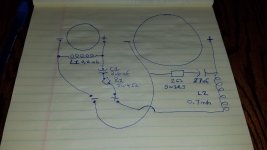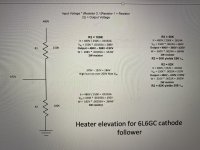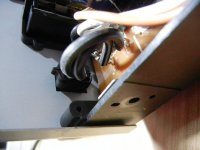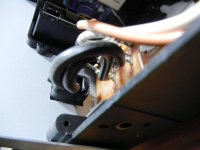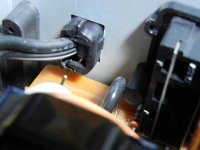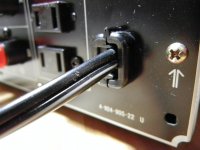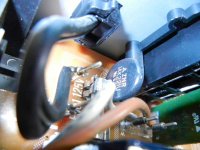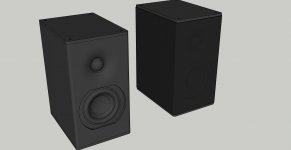I jumped right in and didn't introduce myself, turns out there is an introductory sub forum. So here is my attempt, I might be a little long so maybe grab a tea, cocoa, or a pop.
Let me start with that I am Autistic. This affects my perception and preference of music and equipment. For example, after listening to an Audio Technica cartridge for a while, my ears hurt from the high pitched noise. Another, I enjoy feeling music, one reason I love classical organ music; this does not mean having my eardrums beaten to a pulp. Additionally, I can hear past the normal range of hearing, been professionally tested and for fun tested myself in physics with a sound generator (asked my fellow students to let me know when they could no longer hear the sound, then I went until I could no longer hear).
Let me say, music saved my life. How, you ask? Well, I was severely abused by biological "mother", so bad in fact contemplated suicide when about nine or ten (memory is hazy), until found her LPs and some reason started playing them (neither of my folks played them after I was born), the ideas got me thinking differently and kept me going, until just after turning 12 rescued by Dad and his folks (Oma and Opa).
In my mid teens I started finding LPs at library sales, then life got busy and stopped collecting. Fast forward sometime during studying at university, no family around, and got back to enjoying them, until my all in one was stolen. Time went by, got the itch, then to keep it short, spent years trying to get a useable sound system, not knowing anything. The worse decision was purchasing a U-Turn turntable, absolute rubbish, belt too big, solved by applying weather sealing foam tape to enlarge the platter, didn't have the time or energy to do it right. Then this spring, family stole the house I was living in (for the better, it was an abusive situation, plus this new place is far superior) and there is no room for the horizontal Telefunken console, so based on a friend's suggestion, looked into Technics for the equipment and he gave me vintage Grundig vintage speakers some **** hacked the legs off of (sadly listening to a home recording of an interview of a long ago deceased relative had a right channel spike and now sounds awful).Doing a plethora of research and eBay hunting, built a system consisting of: a SU-Z600 amplifier, M234X cassette deck (love the DBX noise suppression), and a ST-S707 receiver (stellar FM reception, have not gotten an AM antenna, though bet be also just as amazing). I eventually will add a turntable and compact disk player, in that order.
I had too many hobbies, trimmed down to just a few, so collecting equipment isn't going to be one of them. However, I am here to explore and learn, as a "bipartisan", with the intent to over time, knowledge and funds permitting, try upgrades (though my funds now have to go to rebuilding a Volkswagen 1200cc engine).
If anyone inclined to know what my other hobbies are:
Art, in the mediums of acrylic, charcoal, photography (Olympus OM SLRs or my great Aunt's 620 format Kodak), and watercolor.
Air cooled Volkswagens (I much prefer the Type 3 though inherited Dad's 1964 Beetle he bought in 1968) and doing all the work myself (except rebuilding transmissions or steering boxes and paint (though do body work including welding)).
Music, listening to and playing. My first instrument was clarinet, mostly Oma's choice, then harmonica (fifth grade teacher taught all his students, keep trying to get back to it), piano (I still have the one I learned on), taught myself organ (Hammond M3 which also still have, though sadly in a hot storage unit), and cello (borrowed from the school). I enjoy traditional bluegrass, classical music, folk, hymns, classic jazz, 1970s and 1980s discotechnick, rock and roll from about the late 1950s through about the late 1970s, some 1980s glam rock and pop (ex. Cyndi Lauper), and various rock pieces afterwards (if can't understand the words or is too 1990s onward, don't find enjoyment).
Tailoring, self taught and still learning.
Upholstery, just started learning last year.
Used to have twice as many, though took my friend's advice and no longer involved.
Oh, and if any of you are wondering, I was born during the Regan administration, do the math.
😛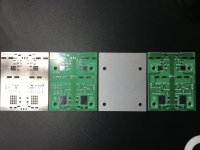 0FB67E69-13E0-442C-B5EF-D21AB258E453.jpeg604.4 KB · Views: 361
0FB67E69-13E0-442C-B5EF-D21AB258E453.jpeg604.4 KB · Views: 361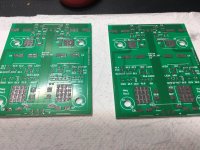 D3953165-5A36-4E59-B97F-2130E34B427A.jpeg461.3 KB · Views: 366
D3953165-5A36-4E59-B97F-2130E34B427A.jpeg461.3 KB · Views: 366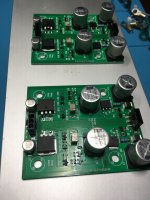 C93F69BF-18AD-472B-BC73-2DA430E5B9B2.jpeg407.1 KB · Views: 369
C93F69BF-18AD-472B-BC73-2DA430E5B9B2.jpeg407.1 KB · Views: 369 41984265-6DB1-4062-A8D6-1C621189A123.jpeg272.8 KB · Views: 353
41984265-6DB1-4062-A8D6-1C621189A123.jpeg272.8 KB · Views: 353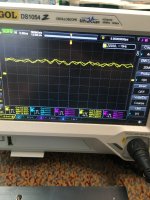 310C640E-251D-43C7-A10D-CA3A5637BDC2.jpeg475.8 KB · Views: 333
310C640E-251D-43C7-A10D-CA3A5637BDC2.jpeg475.8 KB · Views: 333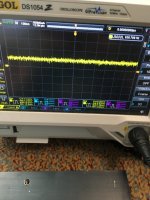 BCC58654-8CEF-4305-A469-0E8ED1CEB001.jpeg429.6 KB · Views: 283
BCC58654-8CEF-4305-A469-0E8ED1CEB001.jpeg429.6 KB · Views: 283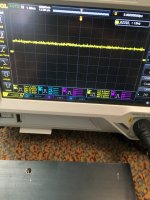 573AEC9C-CB56-44E8-9417-0696AC020AB0.jpeg463.5 KB · Views: 329
573AEC9C-CB56-44E8-9417-0696AC020AB0.jpeg463.5 KB · Views: 329![IMG_20220410_125314[1].jpg](/community/data/attachments/959/959891-230271a4949b0bb176721661b940d115.jpg?hash=IwJxpJSbC7)
![IMG_20220410_125311[1].jpg](/community/data/attachments/959/959892-8877f8256f8093258745818b6fac8493.jpg?hash=iHf4JW-Aky)
![IMG_20220410_125143[1].jpg](/community/data/attachments/959/959893-68b7e3dc1afc1183d36667470861aa74.jpg?hash=aLfj3Br8EY)
